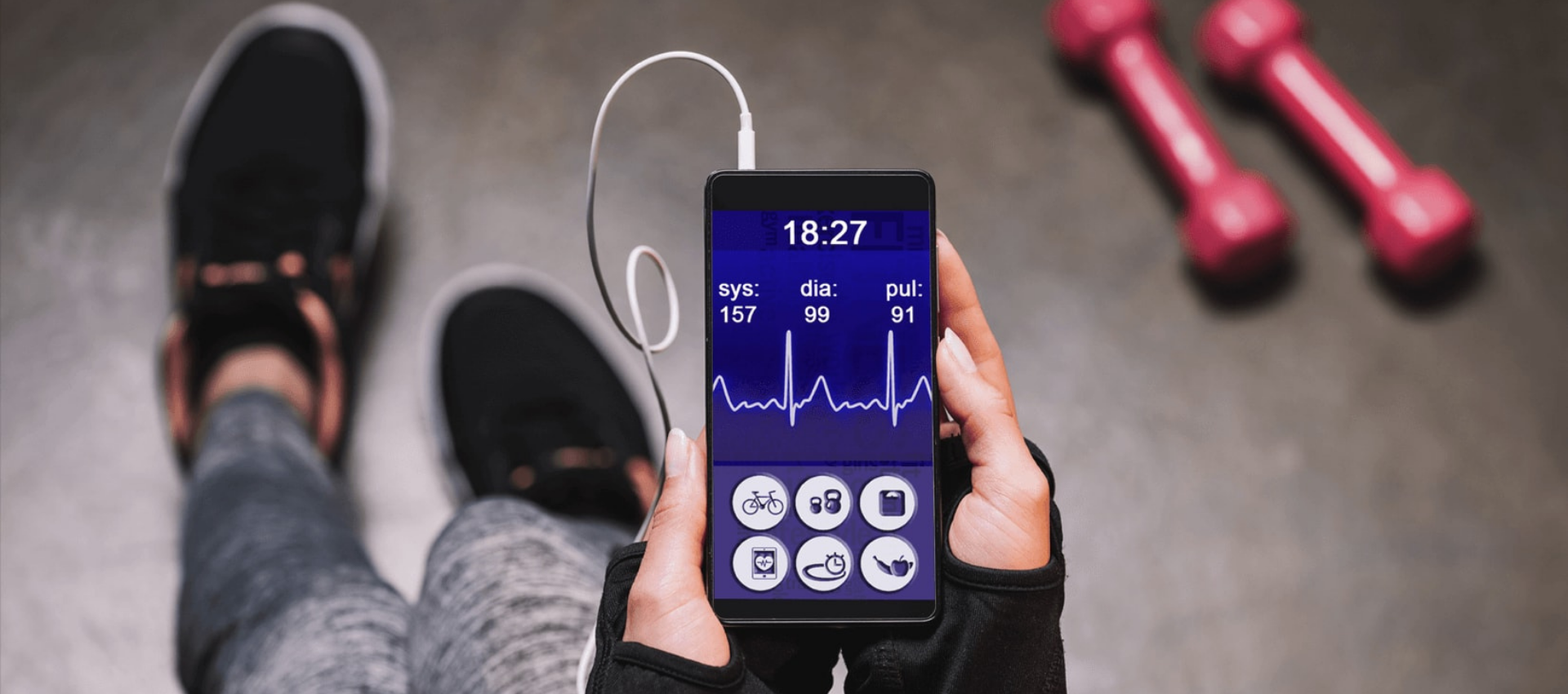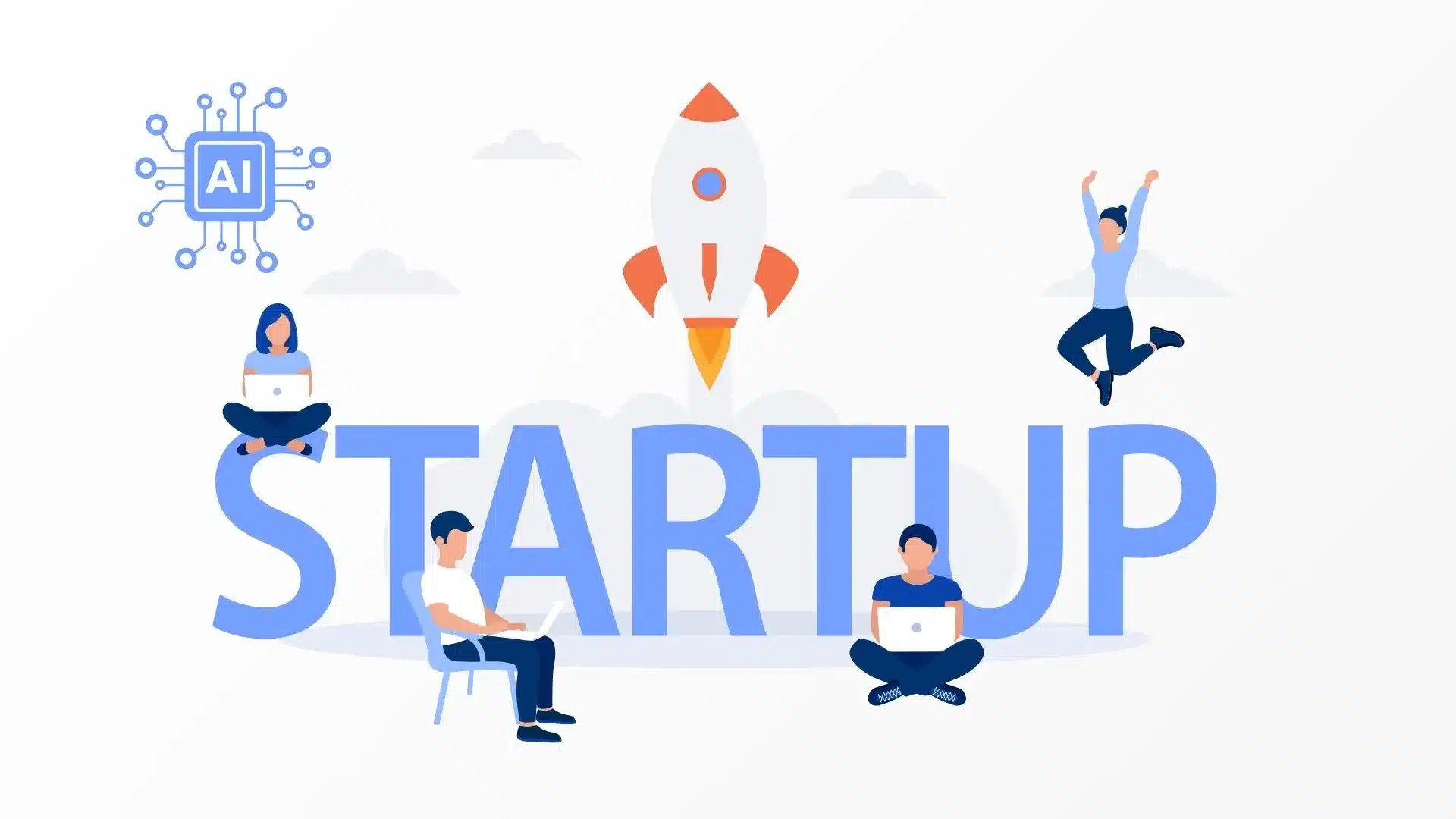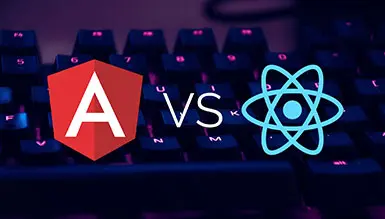Well, let us know why it is so profitable to Create a Fitness App.
And even before we dive into that, why is Creating a fitness app such a hot genre in the market these days?
Well, for starters, in exceptional times of the COVID-19 epidemic, staying physically active and keeping fit is a prerequisite. More and more people have started doing fitness exercises and involving themselves in sports proactively on a regular basis to overcome the harmful impact of a lethargic lifestyle during the lockdown. Added to this, sound health and good physical condition are a great way to live your life to the fullest and be productive at work.
The healthcare industry, a.k.a the fitness industry, is one of the early adopters of mobile apps and web apps designed to facilitate physician-patient interaction. These apps are like the backbone of mHealth and telemedicine. People are not only able to track their health condition- but they also get steadfast treatment via remote therapy. It saves time, commutes, extra expenses and helps people stay isolated!
Create a fitness app development industry comprises the lion’s share of the mHealth app market. There are a plethora of successful apps in this genre. But it still has considerable room for improvement.
Got an idea for an ever-evolving, game-changing fitness app? We believe that you could be in the race! Read ahead to know more about fitness app development.
Fitness App Industry Trends
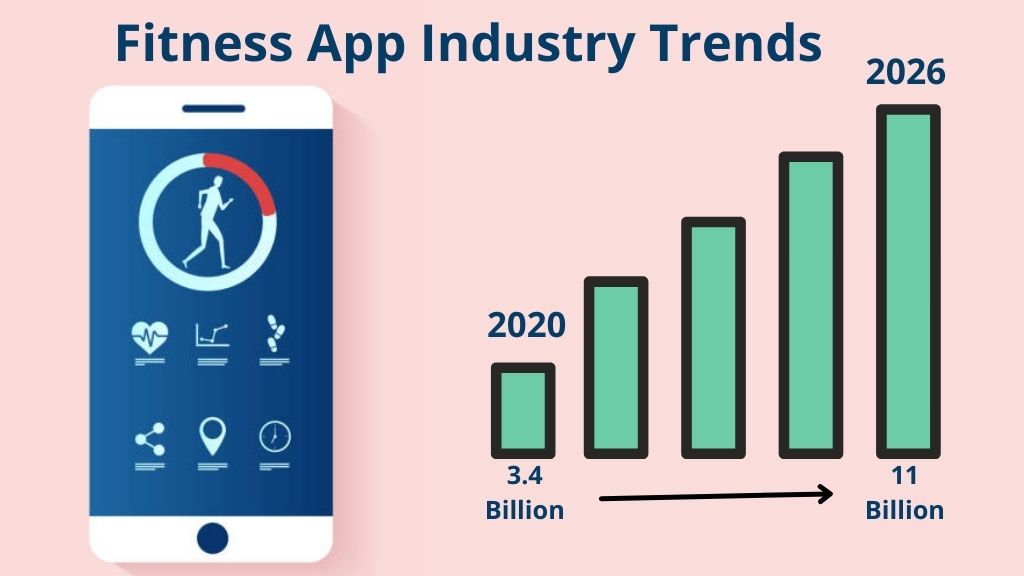
A recent report from Grand View Research indicates that there has been progressive growth of this market about Create a Fitness App. With a market size value in 2020 of $3.4 billion, the revenue is estimated to reach nearly $11 billion by 2026! Speaking of fitness apps inclusion and accessibility, the total number of smartphone owners that use fitness and health mobile apps in the USA at least once per month has increased drastically to almost 90 million in 2020 from 68 million in 2019.
With all these, we can conclude that if you wonder how to create a fitness app, you are in the absolutely right direction! It not only looks promising in terms of business revenue, but it also is quite of an ROI booster.
Why Do You Need Fitness App?
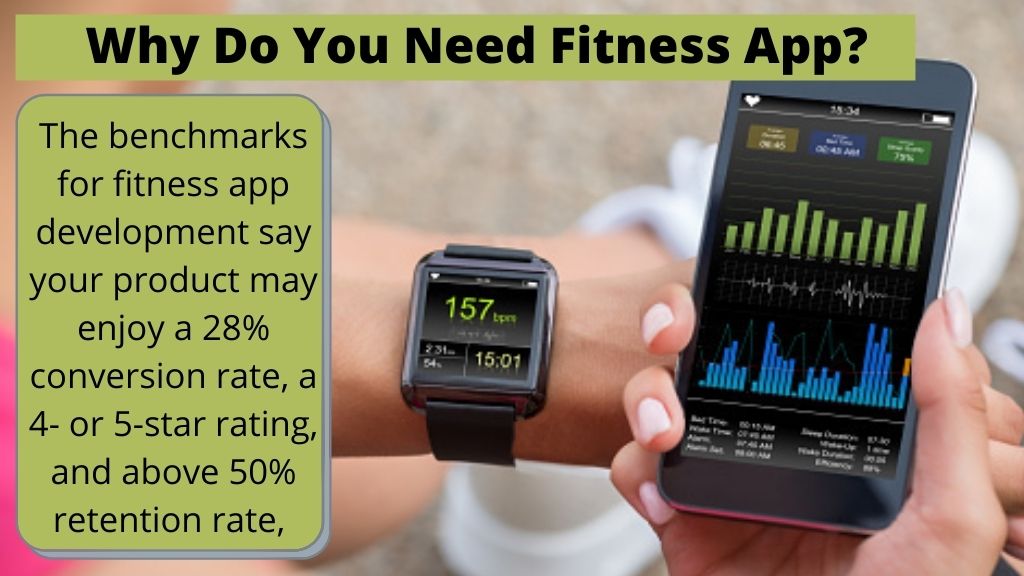
Fitness applications are all the craze right now. With more people paying better attention to their well-being, these apps have become a normal thing in almost every smartphone. But a new phone and you’ll most definitely have one fitness app pre-installed- along with Facebook and other ‘obvious’ apps.
COVID-19 is a catalyst in this trend. People have mixed their personal and professional lives. As a result, there’s less access to in-person training and gyms. Virtual classes are a boom for those who want to stay fit and motivated.
It’s no wonder for many of us to start pondering, “How to build a fitness tracking app?” or rather “How to make your own workout app?”.
Meanwhile, try to keep these points in mind:
- The only reason to build your app should be something else excluding the global market for fitness apps reaching $14 billion by 2026.
The benchmarks for fitness app development say your product may enjoy a 28% conversion rate, a 4- or 5-star rating, and above 50% retention rate, — that too if you follow the most promising practices.
The answer to the question, “how to make a fitness app?” is by working with the best teams that can promise a good app in the end.
If you are scrutinizing for the information on how to build a fitness app that stands out, then you’re reading the right guide today!
Let us discover everything you need to know.
How Does a Fitness App Work?
Fitness app development is an interesting and promising genre. It is reasonable since the market will continually grow in the future as well. If you are wondering how to build a fitness app, the first step is to know how it works. Well, creating a fitness app can be of different types- depending on the audience you are targeting and the type of features you will come up with. Let’s discuss the most popular ones that you can create.
Types of Fitness Apps You Can Choose From
Determine which type of app you are going to deal with. There are a few different types of such apps that are the most prominent in the market today. Let’s take a brief look at every one of them.
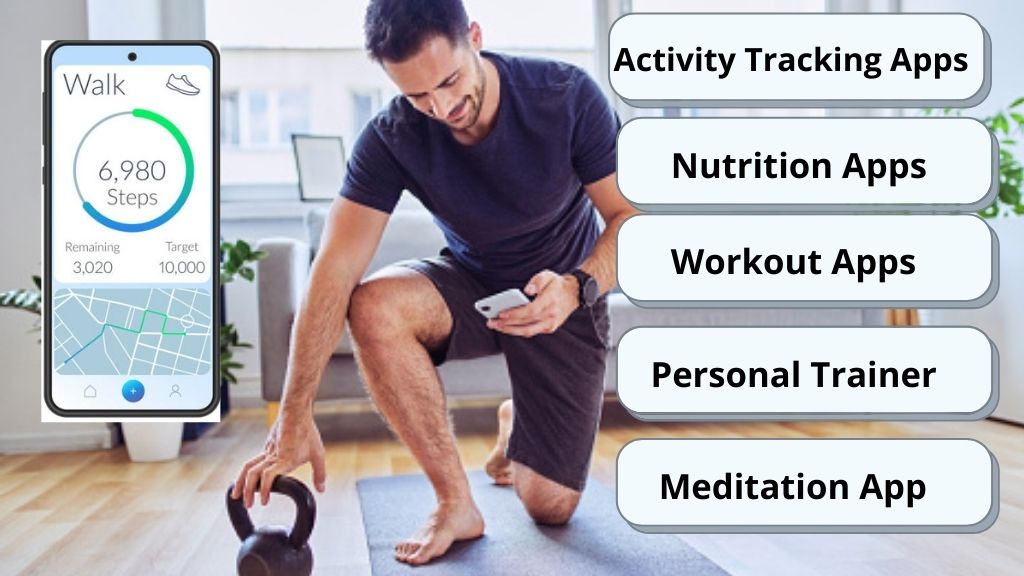
Activity Tracking Apps
These applications monitor everything a user does throughout the day. An activity tracking app collects data on everything- the total number of steps taken, number of stairs climbed, distance covered, hours slept, speed run, etc. These provide insight into how many calories you have burned. Running, cycling, and simple activity apps are a few examples. But how to build a fitness tracking app? We will get into that in a while. Keep reading.
Dieting and Nutrition Apps
About 10% of male and 18% of female US users actively use applications to track their nutrition and diet. Depending on individual goals, users lose or gain weight, monitor the consumption of calories, control their healthy eating habits, and much more. YouAte, Lifesum, Yummly, etc., are a few examples.
Workout Apps
You might be the most interested in these types of apps if you are wondering how to build a workout app. The workout apps are like personal trainers inside your smartphone. They provide users with personal training sessions by coaches whom they choose. These also allow people to create workout plans based on their physical conditions and workout goals. Fitbit Coach, Nike Training Club, Adidas Training and Running, and many others are a few examples.
High-Intensity Interval Training Apps
Create a fitness app is very popular among busy users who are into intense training but don’t get enough time or expertise to help themselves. These come with short training workouts. So, users burn calories over a short time and spend a lot of energy. Remember that such exercises require a certain level of physical condition. So, you must mention in your app that it is better to consult with a doctor first, or else there can be repercussions.
Personal Trainer or Studio App
Some Training studios and Personal trainers have their custom workout apps. You can create an app with different features that allow users to choose a trainer, find free time to book training sessions, look up their schedules, etc. If you want to know how to make your own workout app of this type, you might need to add a news feed with useful information. It assists in user engagement and retention.
Meditation App
These fitness apps provide users with diverse exercises that help them do yoga and keep peace of mind. Remember that you have to divide these into different levels of sophistication based on the levels of the users. If you want to know how to make a fitness app with the highest retention rate, your answer is this type of app. Daily Yoga and the Breathe by Apple are a few examples.
The Core Features of a Fitness App
Our clients often ask our advice on how to build a fitness app that users will fall in love with. Well, include the best features- and a lot of them. The best apps rely on several basic features and about two unique ones. You can surely go for more!
Here are some of the features that your app MUST have:
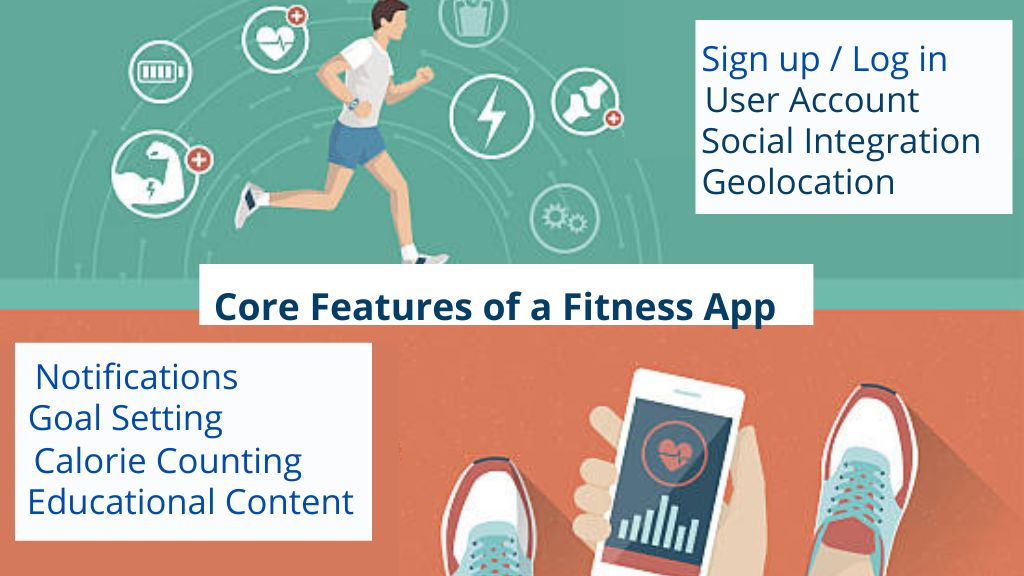
Sign up / Log in
Offer the ability to create a user account. Provide users with different options, like fast signing up with social media like Twitter, Facebook, Google, and registration with an email address, etc.
User Account
This will help you make money in the long run. Users will get an insight into their achievement, progress, allow them to set up personal goals, etc. You can incorporate different options, like allowing people to use this app on multiple devices with the data stored in the cloud. Manage paid subscriptions with integrated payment systems. Also, allow people to adjust interface preferences, add their personal photos, weight, height, other health and physical conditions of their personalized workout plans.
Social Integration
You need to regard this feature when you look at how to build a fitness tracking app with a personal account. You can take this functionality a step ahead and, in addition to social sign up and log in, allow users to share their fitness results over social media.
Geolocation
This feature comes in handy when tracking user activities in running and cycling fitness applications. Integrated Google or Apple maps along with built-in GPS sensors help users to create routes for tacking, running, walking, hiking, power walking, etc. Also include the ability to locate a current location, to track covered distance, etc., in such apps. Strava is a commendable example of such an app.
Calorie Counting
People mostly use workout apps to put on muscles or lose weight. Allow them to count how many calories they consume and burn during workouts and everyday tasks. It is the #1 feature that even a newbie would look for in your app. Never forget to include it!
Notifications
Let’s be honest here- push notifications are a must-have for any application- create fitness apps are no exclusion. It helps you can inform your users about key updates in your apps, remind them about planned workouts, nudge them to drink more water, remind them of the need to work out more, inform them about missing hours, etc. It helps you keep your app on the top of their minds! But please remember to keep it simple, creative, and maybe funny. These notifications should not annoy users.
Goal Setting
Nothing motivates us all more than personal goals. Also, include the feature to share these goals with friends over social media. It will create a constant challenge for people and encourage them to work out more. As a result, they will stick to their personal plans.
Educational Content
The most useful approach on how to build your own fitness app is to educate your users about diets, workouts, a healthy lifestyle, and other topics that might interest them. Sharing useful content in different forms like blogs, podcasts, videos with the best workout exercises, etc., would be very helpful in bringing more conversions.
How to Make a Fitness App?
Okay. So now you have this amazing idea of a bomb app! Now
How do you move from a Create a fitness app development idea to fitness app development? The steps might seem quite intimidating, but we have broken them down for an easier understanding:
STEP 1: RESEARCH MARKET / CHOOSE PLATFORM
We won’t pretend we know better what kind of mobile fitness product you are looking for. Let’s just say that you must know your target audience and the devices that they will most likely use. For instance, your user group may run your app on the mobile during the day and switch to a laptop and then check a few stats on their wrist throughout the evening.
Know exactly how you want to envision your app in this case.
STEP 2: PROTOTYPE & USER-TEST
You can perform market research on your own. But typically occurs when you work with an agency with the relevant UX/UI expertise. Create an app idea is turned into the first meaningful form here — a prototype. “What’s a prototype?” Well, if you don’t want to read another book, a prototype is an interactive representation of your app. We first prepare a low-fidelity version of your intended design then work on a high-fidelity prototype. We eventually test and iterate it with your customers to incorporate proper and honest feedback.
STEP 3: CHOOSE THE TECH STACK
Once your prototype is ready and verified, you are prepared for the next step- choosing the right tech stack for your development project. Remember that your choice will affect the budget for app development. But a tech stack may impose specific limitations on your product’s capabilities. What technologies can we choose from?
Native Apps
Create a Fitness app typically takes longer to produce. Work on one type of platform like only iOS or only Android. Example: Apple Fitness+.
Cross-Platform
Want to know how to build your own fitness app for iOS and Android at the same time? Cross-platform apps reuse much of the code to create such products and solutions. As a result, you get a time-to-market, faster, and more tangible budget. Example: Gyroscope.
No-Code Mobile App Builders
You can always use no-code tools like Appy Pie if you want to know how to build your own fitness app. But use it at your own risk only.
STEP 4. DESIGN, BUILD AND TEST, RINSE AND REPEAT
This is the main part- the designing and coding part. It involves preparing sprints with development tasks, testing, reporting, reviewing progress, and sharing feedback. Does app development seem like a black box? We, at JumpGrowth, make the process as easy and transparent for you as possible. We constantly keep you in the loop via email, Slack, and regular video meetings. Get in touch with us today to get started with JumpGrowth in no time!
STEP 5: RELEASE AND MAINTAIN
Finally! Your app is ready to be released and used among potential market users. Time to lean back, relax, and take a chill pill, right? Not quite, if we want to grow our product. Here’s what we will need to do:
- Check app usage from a built-in mobile analytics tool (like Flurry or Google Analytics)
- Check user reviews thoroughly and look for in-app feedback (via both- email or a built-in customer feedback tool)
- Keep continually updating the solution with the latest features and modifying the existing ones based on the current user feedback.
Honestly, this quest never ends- as your audience keeps growing over time!
How Much Does It Cost to Make a Fitness App?
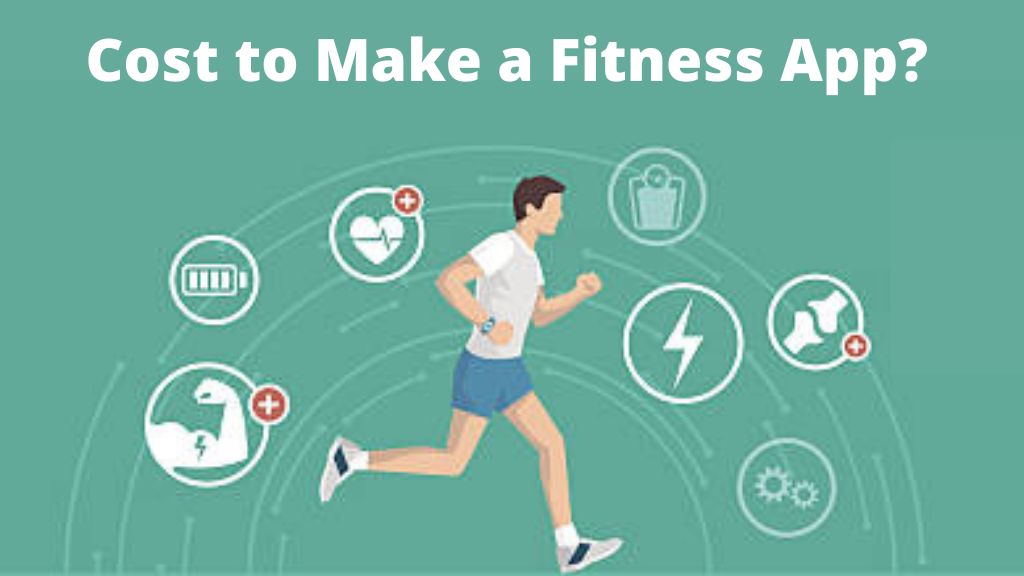
The development of an app is a multi-step process. The overall costs depend on everything. As a matter of fact, developing a minimal viable product (MVP) alone may cost around $25,000-$30,000 for basic fitness app development. So finally, how much does it cost to make a fitness app? For a full-featured product, costs may fall within $40,000 — $200,000, depending on what we need to implement:
- AI/ML technology (for instance, if you want to recognize user movements during exercises)
- support various hardware connectivity
- support BLE
- include voice integration
- include video streaming, etc.
Note that if you want to support Apple TV, Apple Watch, iPads, and provide clients with an online training experience on their respective desktops — those will be like separate apps. As a result, they will require extra investment.
Suitable Monetization Strategies For A Fitness App
Well, the entire algorithms and interface might sound atypical for fitness apps. But guess what? Such apps have the same monetization models as other mobile apps and software.
So, you can sell via subscriptions or in-app purchases. Alternatively, you can also set up an e-commerce store for selling some concrete sports equipment or food. Finally, we can pretend we’re Adidas and put out a stellar fitness app for the hell of it! In the end, just to make your fans more loyal.
In case you are going with a subscription model (that you should be) for your app, keep it outside of your main Create a fitness app, at least during its inception. This way, you will keep the 30% cut that Google and Apple grab from per purchase.
So why do we think you should go for subscriptions? For one thing, you will be in good company. Let people use basic features for free and include a standard price for extra features or premium features. This is referred to as a freemium service and is also pretty popular.
Alternatively, you can try ads. Think carefully about when to display them to keep the user experience consistent.
Wrapping It Up
With all that said, the success formula of how to build a workout app is simple and pure. All you need to turn your business ideas into reality is a professional helping hand. Well, guess what, JumpGrowth is here for that!
With a bevy of success stories under the belt, here at JumpGrowth, we know perfectly well how to get you covered with app development solutions in the form of both- prebuilt and custom development services. Contact us to gain a competitive edge TODAY!!!
Frequently Asked Questions
- How to create a fitness app that connects with external sensors? I need some options that would work tech-wise.
Answer: For iPhone – Kotlin, Swift, Flutter, React Native. For Android – Java, Kotlin, Flutter, React Native. No PWAs, since these do not provide any support for BLE. It is MAINLY required when we want to connect to external hardware.
- Recommend some monetization options for fitness apps.
Answer: Subscriptions are undoubtedly the best. You can also go with in-app purchases, freemium model, prepaid services, ads, third-party integration warning, affiliation earning, and many more.
- Recommend some security for fitness app development.
Answer: Nothing fancy: social logins, HTTPS, automatic expiration of sessions.
- Please let me know how to make your own workout app with your company. An estimate MVP?
Answer: You can start a fitness app (MVP) at $25,000.
